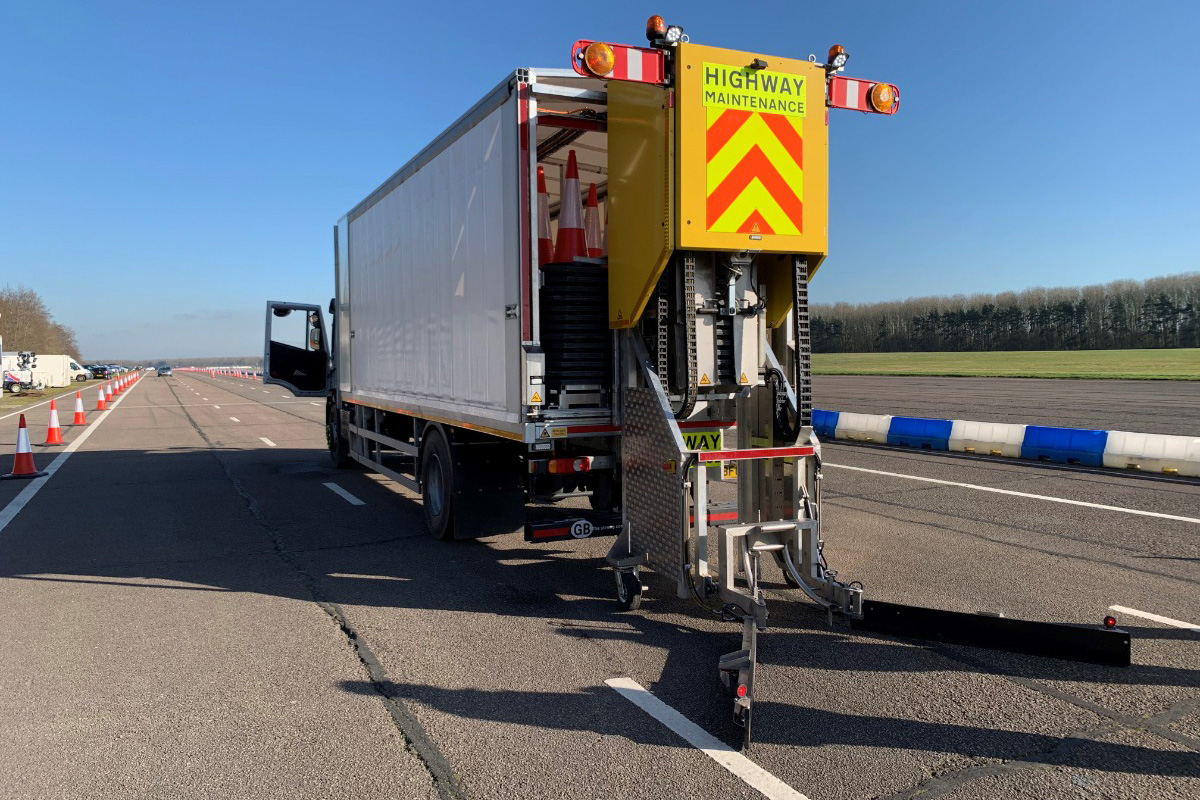
A virtual twin of the road network that can predict the time and location of potholes and other maintenance issues is just one of the innovations poised to transform the future operations of motorways and major roads in the UK, according to National Highways (formerly Highways England)*.
Other initiatives include intelligent road materials able to repair themselves and more connected and autonomous plant.
These are some of the systems set to be rolled out as part of National Highways’ Digital Roads strategy which is outlined on a new website and ‘virtual learning environment’, rolled out on 2 September.
The web pages clearly set out the company’s Digital Roads 2025 vision and how the growth of digital technology and the move to electric, connected and autonomous vehicles will fundamentally change roads in the future.
National Highways Executive Director of Strategy and Planning, Elliot Shaw, said:
“We are at the beginning of a digital revolution on our roads network, a once-in-a-century transformation which will fundamentally change how our roads are designed, built, operated and used.
“The Digital Roads journey, the strategy that will create the roads of the future, is huge. It covers every aspect of the roads infrastructure from design and construction, to how roads are operated to the changing experience for all road users.
“Digital Roads will make our roads safer and greener. Improvements and maintenance will be delivered more quickly with less disruption and road users will have a far better end-to-end journey experience, with savings on time and the cost of travel.”
National Highways, formerly Highways England, is laying the foundations of the Digital Roads vision with several ambitious partnerships working at the forefront of technology.
The road twinning system is being developed in collaboration with UK Research and Innovation (UKRI), Engineering and Physical Sciences Research Council (EPSRC), the EU MSCA COFUND programme, construction and engineering company Costain and the University of Cambridge. It will see drawings and static models replaced with digital versions that can identify when maintenance is needed.
The system is being developed thanks to two grants: the £8.6 million EPSRC Digital Roads Prosperity Partnership grant and the £6 million EU MSCA COFUND Future Roads Fellowships programme.
The University of Cambridge Principal Investigator of these grants, Dr Ioannis Brilakis, said:
“It is high time the transportation infrastructure sector embraces digital transformation. We should strive to replace drawings and static 3D models with dynamic and data-rich Digital Twins, pdf documents with databases, file exchange with cloud permissions exchange, passive materials with smart materials able to sense and heal themselves and automate all manual routine maintenance. All this is possible on a data science foundation, able to generate rich, data-driven insights to help us make better decisions.”
Combining ‘live’ data from intelligent materials in the existing road surface with a digital twinning system that visualises the road and its condition will identify when maintenance work is needed, with roads able to repair themselves using self-healing materials. This will dramatically reduce the need for time consuming and costly on-site inspections, prevent unnecessary delays to drivers and reduce the emissions generated by roadworks.
Also in use or being developed are connected and autonomous plant, off-site fabrication and modular construction methods.

As well as reducing disruption for drivers, these steps will reduce the associated carbon emissions by around 50 per cent and help to meet the target of zero injuries or deaths on the network by 2040.
The Digital Roads vision for the strategic road network supports the Government’s ambition of ‘the UK being a world leader in shaping the future of transport’ and supporting Britain’s growth. For example, digital design and construction could reduce scheme delivery times by up to 50 per cent.
Roads Minister Baroness Vere said:
“From digital road models that can predict where maintenance is needed on the real-life road network, to self-repairing road surfaces, and automated cone laying machines, we’re committed to keeping the UK at the forefront of technological developments.
“I’m therefore delighted that National Highways’ vision reflects this, benefitting road users for many years to come with greener, smoother, safer journeys.”
How the network is operated is becoming more automated and data driven. The use of technology enables National Highways to pre-empt situations rather than just responding to them. For example, sensor technology will forecast traffic levels, weather and environmental conditions enabling us to pre-emptively prepare and respond to situations.
Communication with drivers is improving, ensuring that accurate information is available to help plan journeys through their preferred digital channels. Longer term, the deployment of connected and autonomous vehicles is expected to drastically improve traffic flow and reduce incidents by up to 90 per cent.
Ian Patey, Immediate Past-Chair of ITS (UK), said:
“National Highways’ vision for Digital Roads will transform road transport in the UK; harnessing technology to create greener, safer, more inclusive and more reliable mobility – the embodiment of an Intelligent Transport System.”
Visitors to the new website will be able to enter a ‘virtual learning environment’ with additional information about how National Highways will deliver its vision and the impact on road users, employees and companies in the supply chain.
Caption: An image from the Digital Roads video showing how digital technology can enable more efficient design and planning by integrating digitised design standards, tools and digital twins
The vision for Digital Roads also goes beyond 2025 and looks forward to 2050 and beyond. Freight platooning, personalised in-vehicle messaging as well as vehicles sharing data, and decluttered roads free from signage – these are some of the ambitions for the roads of the future.
National Highways recognises that realising the vision will rely on the continued support of the supply chain and stakeholders. We are preparing to launch a Digital Roads innovation competition later in the year looking for fresh ideas and involvement.
This will be funded through the Innovation and Modernisation designated fund. For more details about the National Highways Innovation and Research strategy visit here.
To visit the Digital Roads website click here: https://highwaysengland.co.uk/digital-roads
* A government-owned company charged with operating, maintaining and improving motorways and major A roads in England, and setting highways standards for the UK






